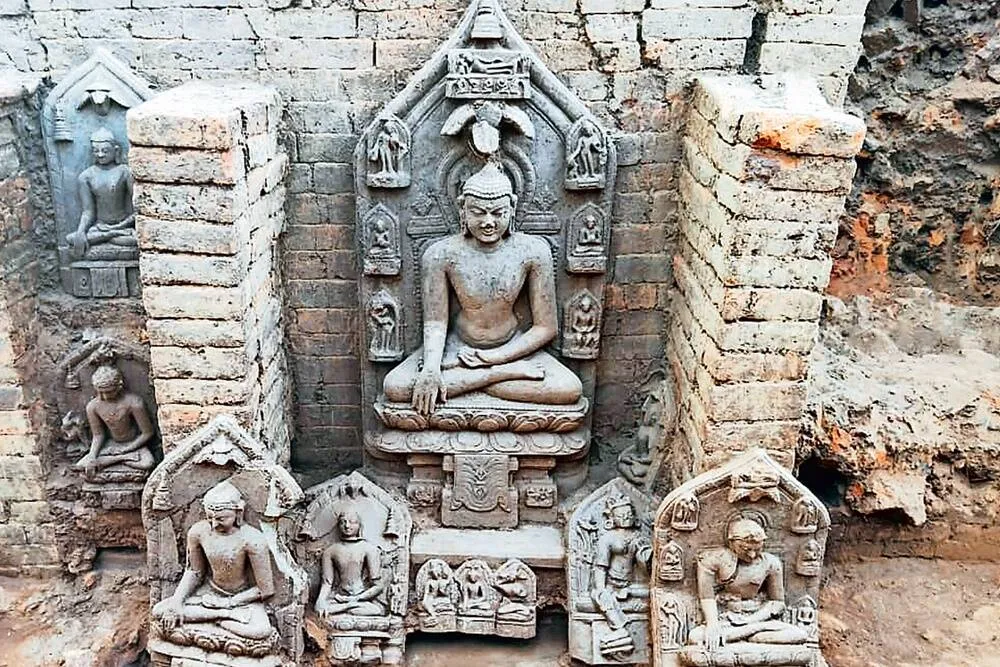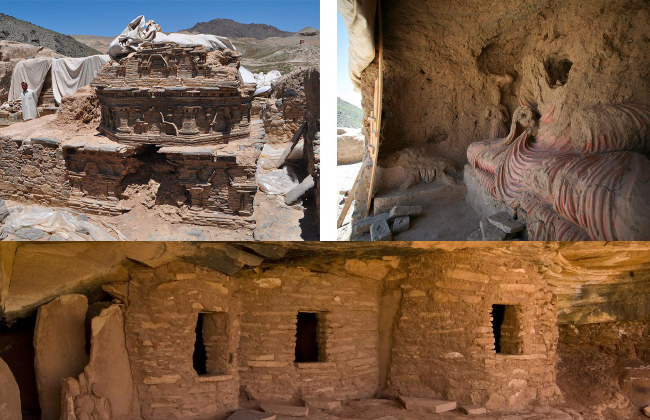The Archaeology of Tibetan Buddhism in India: Tibetan Buddhism, a complex blend of spiritual philosophy and ritual, has deep roots in India. The subcontinent, known as the “Land of the Buddha“, serves as the birthplace of Buddhism and has played a significant role in shaping Tibetan Buddhist tradition. The archaeology of Tibetan Buddhism in India is a fascinating journey through sacred sites, ancient monasteries, and artifacts that illuminate its profound cultural and spiritual influence.
Origins of Tibetan Buddhism and its Connections with India

Tibetan Buddhism originates from the teachings of the historical Buddha Siddhartha Gautama, who attained enlightenment in Bodh Gaya, India. In the 7th and 8th centuries, Buddhism traveled from India to Tibet through scholars such as Shantrakshita and Padmasambhava. These enlightened individuals introduced Buddhist scriptures, monastic practices, and tantric teachings to the Tibetan plateau.
Archaeological remains from India, such as stupas, caves, and ancient texts, provide invaluable evidence of this exchange. Indian Buddhist centers such as Nalanda and Vikramshila served as centers for Tibetan monks who traveled to study under famous Indian masters.
Key Archaeological Sites Associated with Tibetan Buddhism
- Bodh Gaya: Spiritual Center
Bodh Gaya, located in Bihar, is the site of Buddha’s enlightenment and a pilgrimage site for Tibetan Buddhists. The Mahabodhi Temple Complex, a UNESCO World Heritage Site, exhibits architectural and spiritual influences that resonate with Tibetan Buddhism. Tibetan monks and scholars have preserved the teachings and rituals associated with this sacred site for centuries. - Tabo Monastery: A Treasure of Himachal Pradesh
Located in the Spiti Valley, Tabo Monastery is often referred to as the “Ajanta of the Himalayas” due to its intricate frescoes and ancient manuscripts. Founded in 996 CE, the monastery represents a fusion of Indian and Tibetan artistic styles. Its archaeological significance lies in its murals depicting Buddhist cosmology and Tantric deities, which provide a glimpse into the evolution of Tibetan Buddhism. - Sarnath: The birthplace of Buddhist teachings
Sarnath, where the Buddha delivered his first sermon, remains an important nexus of Tibetan Buddhist tradition. The Tibetan monasteries in the area reflect the enduring connection between Indian and Tibetan Buddhist practices. The artifacts and inscriptions found here shed light on the transmission of the religion across the Himalayan region.
The Role of Monastic Universities
The ancient universities of India, especially Nalanda and Vikramshila, played a significant role in the formation of Tibetan Buddhism. These institutions were centers of learning where Tibetan scholars studied Mahayana and Vajrayana texts. Archaeological excavations at Nalanda have yielded stupas, monasteries, and inscriptions that highlight its influence on Tibetan Buddhist thought.
The texts and teachings of these universities were later translated into Tibetan, which formed the basis of Tibetan Buddhist philosophy and literature.
Sacred relics and manuscripts
Archaeological discoveries of Buddhist manuscripts, statues, and ritual objects have deepened our understanding of Tibetan Buddhism in India. Tibetan monks preserved these treasures, ensuring their transmission across generations.
For example, thangkas (religious scroll paintings) and bronze statues of bodhisattvas and tantric deities found in the Himalayan region reflect the symbiotic relationship between Indian art and Tibetan spiritual symbolism.
Cultural exchange between India and Tibet
The archaeology of Tibetan Buddhism in India indicates a rich cultural exchange between the two regions. Pilgrims and scholars traveling along the ancient Silk Road facilitated the movement of ideas, art, and spirituality. Indian archaeological sites with Tibetan influence highlight the enduring bonds between these cultures.
Conservation efforts and challenges
Despite their historical significance, the archaeological heritage of Tibetan Buddhism in India faces numerous challenges, including environmental degradation and neglect. Efforts by organizations and governments aim to preserve these sacred sites and artifacts, ensuring their legacy for future generations.
Modern-day Relevance of Tibetan Buddhism in India
Currently, Tibetan Buddhism is thriving in India, especially in regions like Dharamsala and Ladakh. The residence of the Dalai Lama in Dharamsala has become a center of Tibetan culture and Buddhist learning, attracting devotees and scholars from all over the world. The archaeological and spiritual heritage of Tibetan Buddhism serves as a beacon of peace and enlightenment in contemporary times.
The archaeology of Tibetan Buddhism in India provides a profound insight into the historical and cultural interactions between India and Tibet. From holy sites like Bodh Gaya and Sarnath to the monastic treasures at Tabo, these remains tell stories of devotion, learning and resilience. Preserving this heritage is important not only for understanding the past but also for enriching the spiritual tapestry of humanity. As pilgrims and researchers continue to explore these sacred sites, the legacy of Tibetan Buddhism in India remains an eternal source of inspiration.
Read Also: The Mysterious Megaliths of India
![]()





